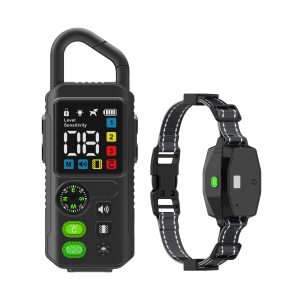The Science Behind Bark Control Collars
As pet owners, we all want to ensure our furry friends behave well in various situations. One common concern is excessive barking, which can lead to disruptions and stress. To address this issue, many turn to bark control collars. Let’s delve into the science behind these devices and how they can aid in training your canine companion.
Understanding Canine Communication
Dogs bark for various reasons, including fear, boredom, attention-seeking, or territorial behavior. It’s crucial to comprehend why your dog is barking excessively to effectively address the issue. Bark control collars work by detecting vocalizations and delivering a stimulus to discourage further barking.
Types of Bark Control Collars
There are different types of bark control collars available, including citronella collars, ultrasonic collars, vibration collars, and static correction collars. Each collar operates uniquely to deter barking, catering to different dogs’ temperaments and barking triggers.
Choosing the Right Collar for Your Dog
When selecting a bark control collar for your dog, consider factors such as size, breed, and temperament. Consult with a professional dog trainer or veterinarian to determine the most suitable collar for your furry friend. It’s essential to ensure the collar fits comfortably and does not cause any distress to your pet.
Training Tips and Techniques
Implementing positive reinforcement techniques alongside bark control collar usage can enhance your training efforts. Consistency, patience, and praise for desired behaviors are key components of successful training. Avoid using the collar as a punitive measure and focus on encouraging good behavior.
Understanding Your Dog’s Progress
Monitoring your dog’s response to bark control collar training is essential. Observe changes in behavior, frequency of barking, and overall comfort level. If you notice any adverse effects or increased stress in your dog, discontinue the use of the collar and seek alternative training methods.
Empowering Your Canine Companion
By utilizing bark control collars responsibly and pairing them with positive reinforcement strategies, you can empower your canine companion to exhibit desired behavior. Remember, effective training takes time and understanding. With patience and dedication, you can nurture a well-behaved and happy furry friend.
Taking the Next Steps
With the right approach and tools, addressing excessive barking in dogs can be manageable. Bark control collars serve as valuable aids in behavioral training when used thoughtfully and in conjunction with positive reinforcement. Stay informed, communicate with experts, and embark on this training journey with your dog’s best interests at heart.




